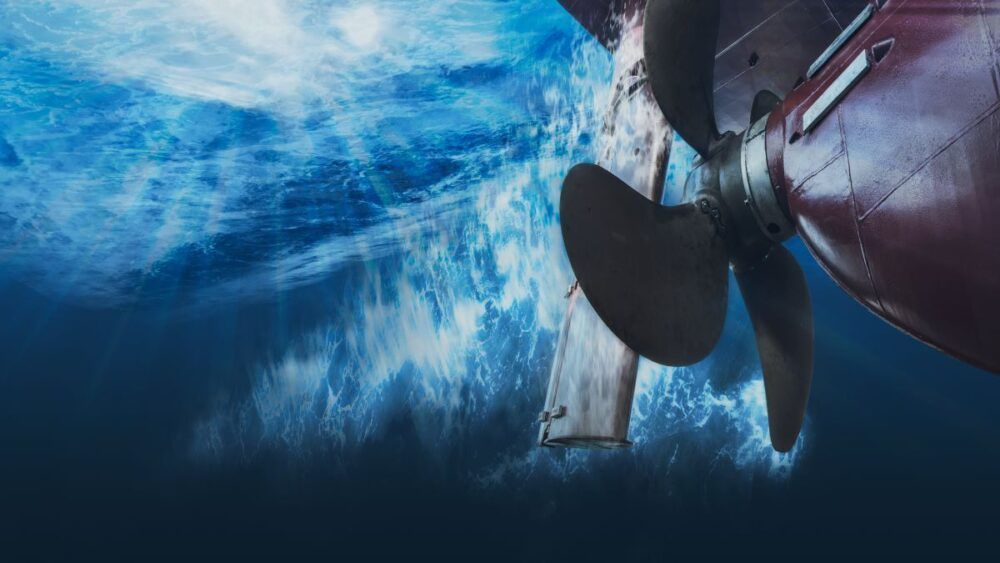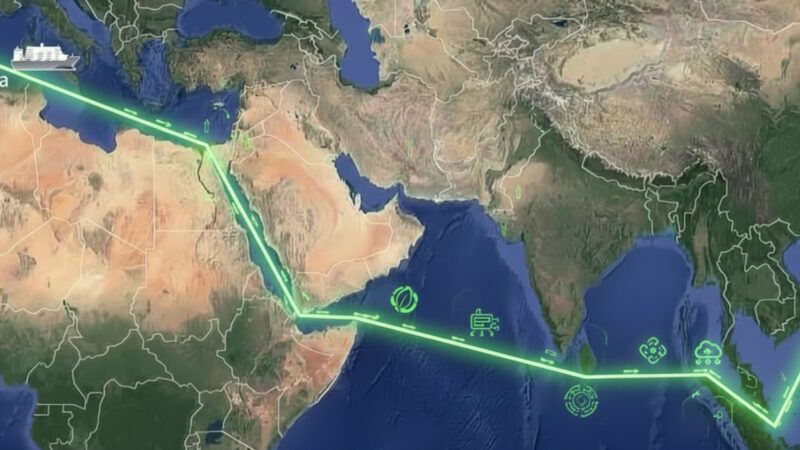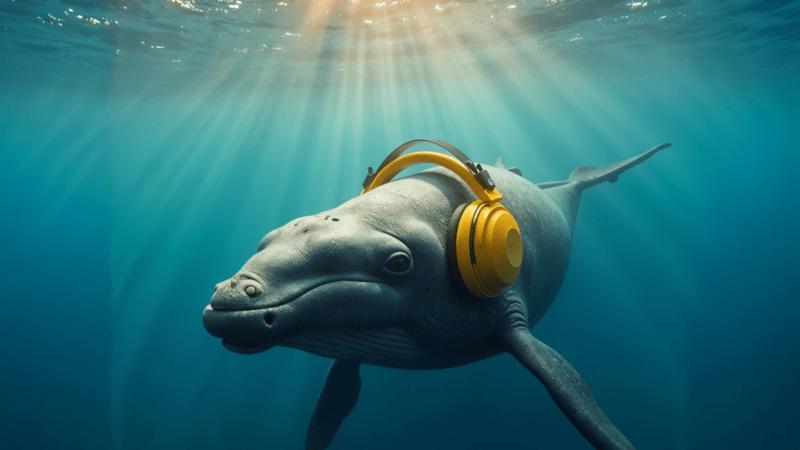 The hearing capacity of marine species and the effects that noise pollution causes on their well-being is a relatively new scientific field. (GettyImages)
The hearing capacity of marine species and the effects that noise pollution causes on their well-being is a relatively new scientific field. (GettyImages)
Mitigating ocean noise, a matter of survival
Why is noise pollution a problem for marine life? Human activity has turned the oceans into a cacophony that impacts ecosystems. This justifies recent studies and initiatives that seek to mitigate this impact. For example, those carried out by the Bioacoustic Applications Laboratory (LAB) of the Polytechnic University of Catalonia. Located in the port of Vilanova i la Geltrú, is an international and pioneering research center. Michel André, its director, talks to PierNext about his latest discoveries and how the maritime industry can help adjust the balance in favor of the biodiversity of oceans and seas.
 The hearing capacity of marine species and the effects that noise pollution causes on their well-being is a relatively new scientific field. (GettyImages)
The hearing capacity of marine species and the effects that noise pollution causes on their well-being is a relatively new scientific field. (GettyImages)
Although we associate the marine environment with silence, the reality is very different for the millions of beings that inhabit it. There is a natural chorus of the sea, different, rich and diverse soundscapes. And the "anthropophony" of daily activities such as transportation, dredging and drilling or oceanographic studies, cause sounds and vibrations that provoque variations in their behavior. They can even cause the extinction of species.
Knowledge about the hearing capacity of marine species and the effects that noise pollution causes on their well-being is a relatively new scientific field. For this reason, from Europe, several programs such as BLUE Harvesting or AGESCIC seek to promote greater knowledge and solutions to mitigate its effects.
In this context, in 2004 the Laboratory for Bioacoustic Applications (LAB) became the first laboratory of its kind in Europe. During these years it has developed leading-edge projects such as EAR to the WILD, an innovative application that monitors the biodiversity of the oceans accessible from any mobile platform that will allow listening to marine life from a smartphone, or LIDO, whose objectives are to explore sound in real time and automated of marine biodiversity, in particular, through acoustic detection and monitoring of species of interest, and, on the other hand, the characterization of the different harmful sources of noise to reduce their impact.
Michel André, director of the LAB of the Polytechnic University of Catalonia, explains to PierNext his latest discoveries and points out how the maritime sector can mitigate noise impact on marine ecosystems.
Question: What is the current level of noise pollution in the marine environment?
Answer: The difficulty of establishing thresholds, required by the authorities that regulate sea activities, is to agree on a limit that allows sanctioning those who violate it. This is one of the objectives of the European Jonas project, funded by the INTERREG Atlantic Area program.The problem is that establishing a threshold at sea is very complicated because the references, if we compare them with the land, are different. Sound level meters installed in bars and public squares, for example, record the level of noise causing annoyance to humans and land animals such as cats, dogs, spiders or birds. However, in the sea it is different because we humans do not inhabit it.
There are many species such as cetaceans, invertebrates and plants that suffer this impact in different ways. Therefore, defining a single threshold that covers the entire marine environment is very complicated.
“The LAB published in ‘Nature’ a study on acoustic sensitivity in plants, especially the posidonia. This shows, for the first time, that artificial and high intensity sound sources prevent plants, whether terrestrial or marine, from living. This pollution is jeopardizing its balance and, therefore, the survival of the planet”
Q: Noise doesn't just affect cetaceans, then?
A: 40 years ago, when the scientific community began to realize the impacts that noise pollution could have on the marine environment, we focused on cetaceans. As these species use sound as a tool to carry out their daily activities, we thought they were the most affected. We invested a lot of effort and resources to understand the sensitivity of some 90 species of cetaceans, which alone would represent a lifetime’s work.
However, ten years ago we realized that species such as marine invertebrates, which are not 90 species but thousands, suffer more than cetaceans. All these microscopic beings that lack hearing as we understand it, capture the vibrations caused by noise pollution in the sea.
When LAB discovered and published a study in Nature on the acoustic sensitivity of plants, especially the posidonia, our perspective changed. This shows, for the first time, that artificial and high intensity sound sources prevent plants, whether terrestrial or marine, from living. This pollution is jeopardizing its balance and, therefore, the survival of the planet.
Q: How then can we achieve a balance between the well-being of these marine species and the human activities that take place in the marine environment?
A: The first step is disclosure. Throughout history, humanity has ignored the acoustic dimension of the oceans, since this phenomenon has only come to light thanks to the technology which is now available to us. Few people are aware that the sea is full of sound and that a silent sea is a dead sea. The responsibility and urgency of scientists is to put order and restore this balance. Operators and governments must take steps to reduce these noise sources. The advantage of sound is that when the source that produces it is turned off, its effects are erased. This gives us a margin of hope if operators and governments act and shipyards build quieter ships, isolating the engine room or changing the design of the propellers.
Q: In this context, how can ports help minimize noise pollution?
A: Ports can play a fundamental role because for centuries they have been an exchange hub. There is an economic reality that passes through maritime transport and ports are the ecosystem that can generate a great social, environmental and economic impact. As users, we are all responsible for the activities that take place in the ports and the consequences they generate.
As an example of initiatives that ports can carry out, I would highlight the Echo program of the Port of Vancouver, since it is the first, worldwide, that seeks to reduce the noise level of ships when they enter their facilities and thus minimize the impact that these disturbances cause in the ecosystem.
"There is a margin of hope if the industry begins to design quieter ships and propellers that allow cohabitation with ocean life"
Q: You are also participating in the Saturn project, funded by the European Commission's Horizon 2020 program. What advances in noise reduction do you hope to achieve?
A: Europe tries to respond to the problem of noise pollution by launching several calls. The Saturn project deals precisely with the specific problem of maritime transport. Currently there are about 100,000 active merchant ships with a tonnage greater than 100 GT (container ships, oil tankers, bulk carriers, ...) to which we have to add a greater number of small boats and this is difficult to calculate. This project tries to understand the impact that transport has on cetaceans, fish, invertebrates and plankton and to establish these thresholds that are so difficult to define, as we said before. It also seeks to support the industry in the design of quieter boats and propellers that allow this cohabitation. We are not going to stop our maritime and land operations, but a balance that reduces their noise impact must be achieved. Although we have forgotten it, we are part of nature and we have to restore this sense of belonging. Scientists want to contribute by opening paths that allow us to achieve this goal.
Q: You created the first Whale Anti-Collision System (WACS), awarded with the 2002 Rolex Awards for Enterprise, using a prototype passive acoustic buoy. The goal was for ferry companies and other types of vessels to standardize their use. Is this the case?
A: This project was born in the Canary Islands in the 1990s. In those years, although we did not have so much data as we do now, we were already on alert because some cetaceans such as sperm whales suffered the effects of this noise pollution. We developed this technology that was never implemented on the islands, where the problem of these collisions still persists and is endangering their ecological balance. In Chile we have started a similar and very ambitious project; protect blue whales that migrate between Antarctica and the Arctic from these collisions.






